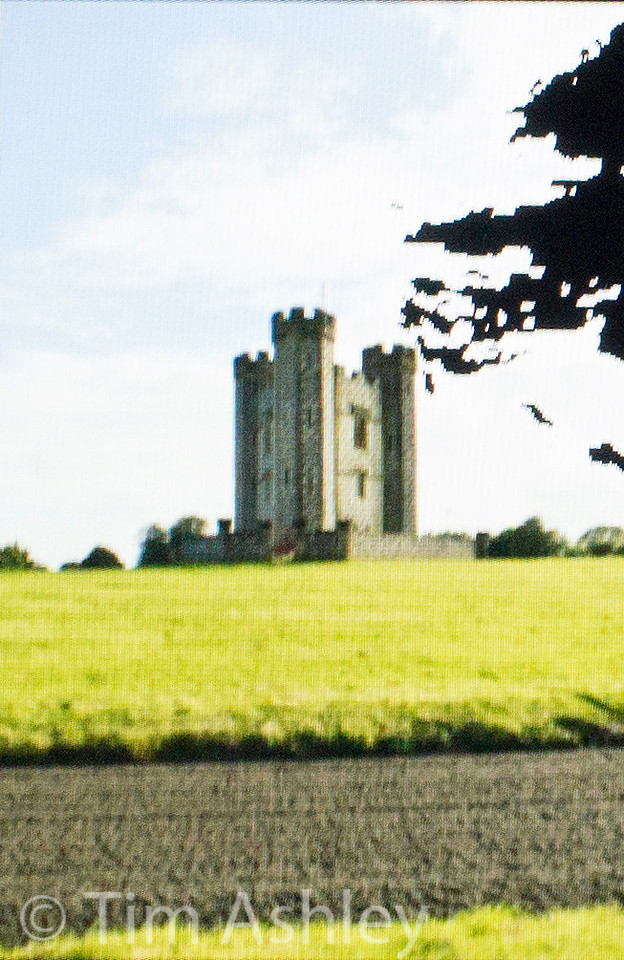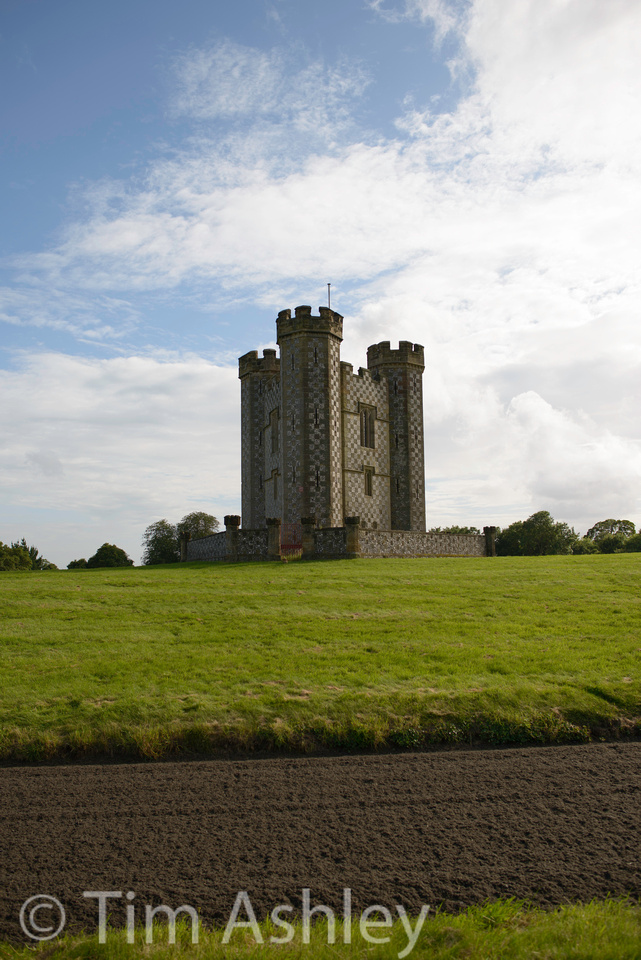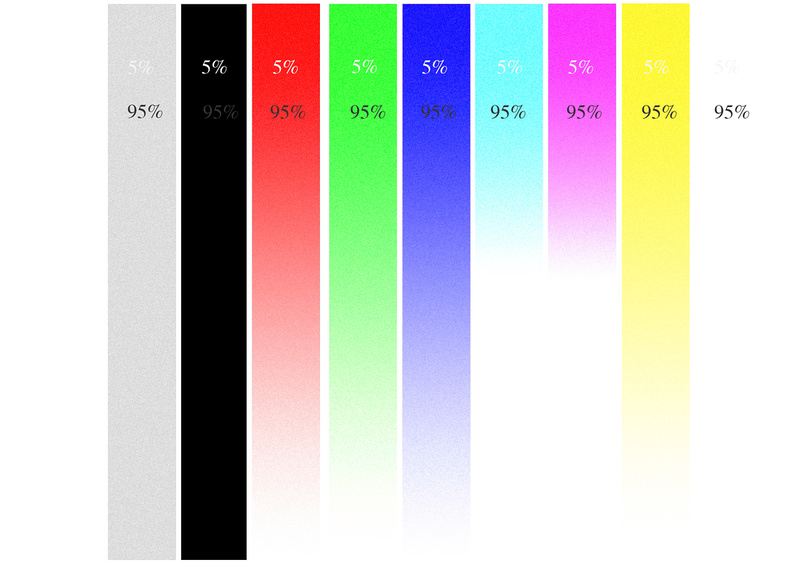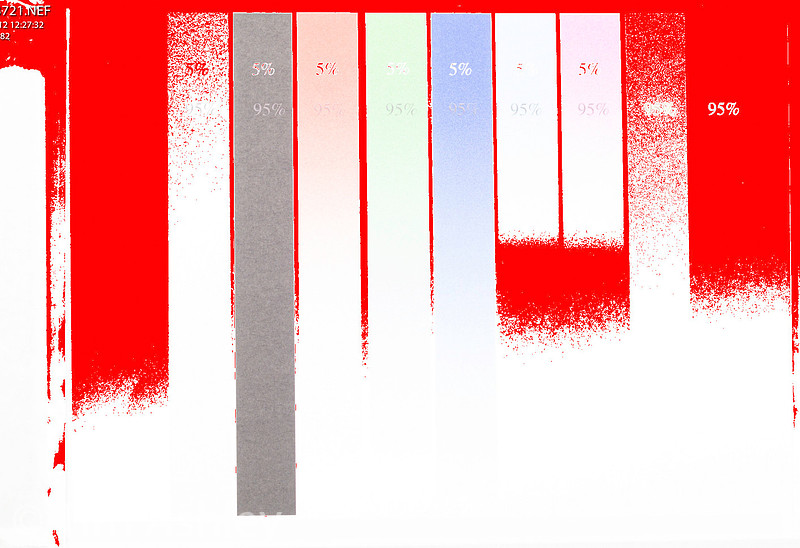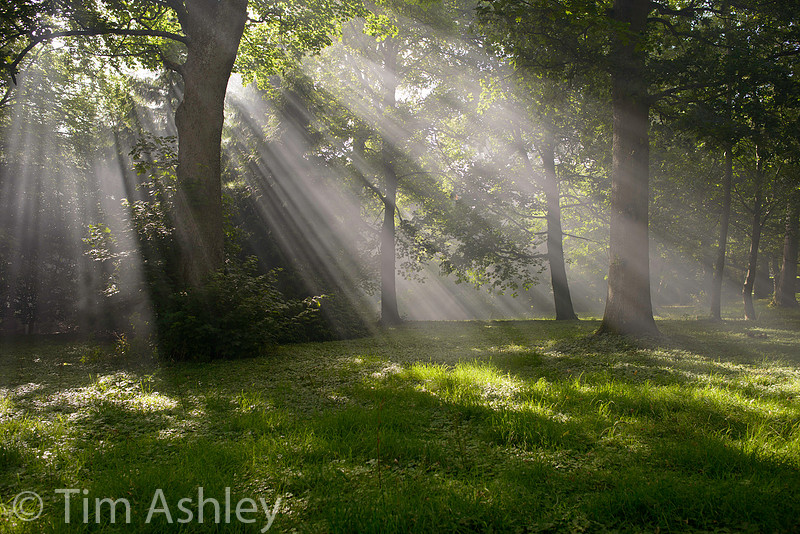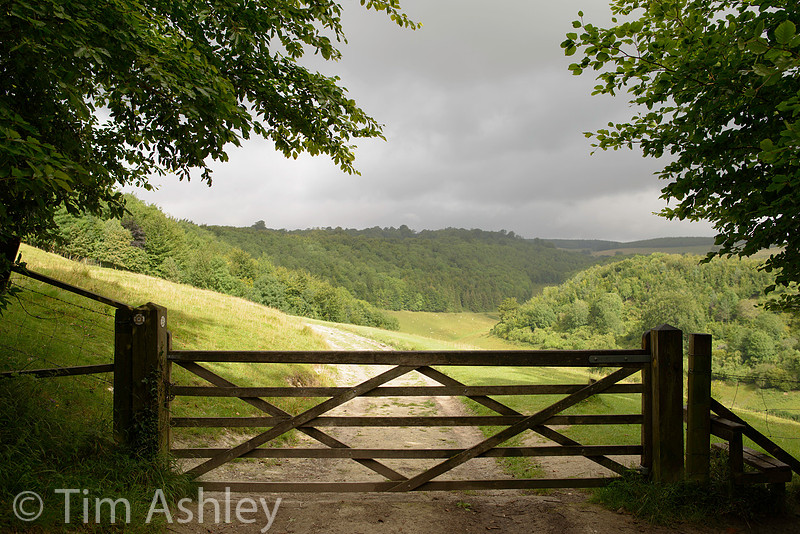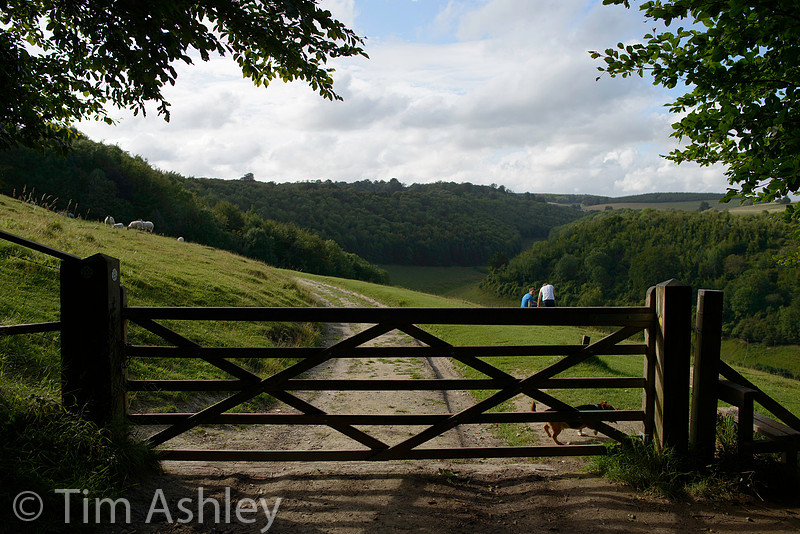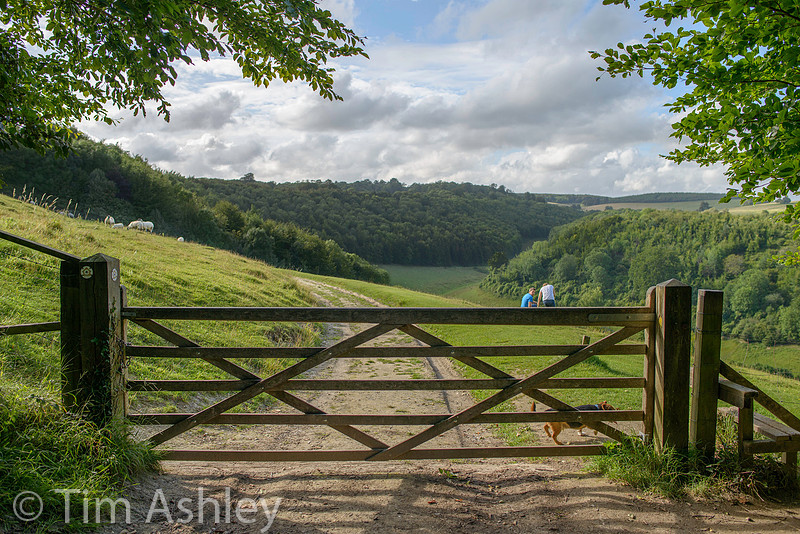The D800 Blinkies: How Useful Are They?First few shots with D800. Review with Highlights Warning turned on. Oh crap, there's a huge blow-out in the sky. Dial in some negative. Review. Cripes. Still blinking. How much is this thing really overexposing by? I thought it had a-maz-ing matrix metering with 91,000 pixels of super intelligence at work analysing the scene and guaranteeing that not even I can screw this up. But half the scenes I shoot seem to have vast black blinkies on them. Help. Load files into Lightroom. Err, where have them blinks gone? A lot of the files that looked badly blown in Review mode are just fine. Here's an example: (excuse the bad photo of the back of the D800 screen)
That's on the screen. But in Lightroom, there isn't a single blown pixel...
Turns out that after a bit of fiddling I discover that Lightroom seems to flash red when any of the RGB channels hits 99.8% or thereabouts (it's a bit more complicated than this but this is close enough to true...) whereas the camera's screen starts to warn you at more like 96.5% But wait. In fact, even if you are shooting purely RAW, the image on the review screen is affected by the Picture Control you have set. Put it to Vivid or Landscape and the blinks kick in earlier than if you set it to neutral. Also, Lightroom will render the file according to the import profile you have set. Camera Neutral gives less highlight warning than Vivid, for example. And changing WB can affect where the image blows, too. TIP: create your own Picture Control with sharpness, contrast and brightness all at minimum. Set the camera to use it, even though you are just shooting RAW: it calms the blinks just a little bit, without putting you at risk. For fun (sad or what?) I made a little chart to shoot. It has bars of pure white, 18% grey, 100% black, grads from 100% to 0% RGBCM&Y and then a little added grain so as to give a bit of detail to see if what seems blown is indeed blown. Then I added text in 5% and 95% black. It looks like this and if you click on it, a full-sized version is yours to use as you will. Note that it displays gamut issues, too complicated to go into here.
Then I printed it, shot it with fairly even studio flash at various intensities and tried to find a frame that was *JUST* into blown whites. You can see that the lighting is not perfectly even (I'm not a copy stand dude) but The frame I got, screenshot from Lightroom with the red warnings turned on looks like this:
Of course, a lot of images are just fine with some blow: it suits them artistically and it is unavoidable technically without biasing the capture wrongly:
Then again, even if you get it slightly wrong it's not the end of the world. TIP: if you have any blown areas at the edge of the image, don't show the bleed onto the paper edge: cut it with a fine black stroke line, or mount the image in a traditional cutout mount in a colour other than pure white. But having said all that, it's right to ask if the over-enthusiastic blinkies on the D800 are helpful or not? I, for example, would prefer that they cut in like LR does: when any channel comes within around 0.5% of blowing. But that's personal and I totally understand that when a lot of consumers are going to be buying the same model as a lot of very experienced users, some attention needs to be given to protecting them. Also, JPEG shooters need to be a little more conservative with their highlights. The next question, of course, is to ask whether the D800 Matrix Metering is as good as one might expect. For a while I thought not: I thought it tended to overexpose a little for my taste and I was slightly surprised that it couldn't, with all its 91,000 eyes and vast brain, recognise a bright sky and expose so as to stop it blowing. Especially given that the shadows are so malleable that underexposure is preferable to overexposure. But then I dialled in a -1/3rd stop fine tune, got used to the system, and think it's pretty good. I still do a lot of review, compensate, reshoot but that gets less frequent the more I get used to the system. And no AE system is psychic: it cannot know what YOU want - and what YOU want is central to the act of taking a photo. We all want different things from a AE system. Some want never to see a blown highlight. Others want to protect the shadows. And like rescue dogs, we all carry the scars of our past: I spent quite a bit of time with a 5DII and learned to finesse 'expose to the right' because of the Dreaded Shadow Banding. Then I spent a lot of time with a variety of Phase One backs on Cambo field cameras (no metering built in) and very quickly realised that the Sunny Sixteen Rule and a bit of common sense were at least as useful and much quicker than a light meter. That, and image and histogram review. On that system, I also wanted to expose as much to the right as possible without blowing anything important but the needs was less urgent because the shadows were much better and because the shape of the rolloff shoulder into overexposure seemed a little gentler. Then along comes the D800 with its amazing shadows and suddenly, I don't want to Expose To The Right (ETTR) any more. Not at the lower ISOs. I want to protect my highlights in white flowers against dark backgrounds. I want a sky I can pull back in post and see some detail in the clouds. And I can have it, as long as I back off that whole ETTR thing a little. Take a look at these two files shot today (I turned my -1/3rd global fine tune off for today's shooting as I thought about this piece). The first shot was taken with no Exposure Compensation whatsoever. It is shown as Camera Neutral, rather bland, but it has the potential to look any number of ways more exciting because there are only tiny, tiny specular blows in the ground and none in the sky. There are also some very fine lines of blocked black where there is no detail
Later in the day, exactly the same scene, but this time -2/3rds was needed to get the best balance of 'no blow, no block' because the lighting was very different.
I personally HATE. Hate hate HATE anything that looks like HDR photography. I associate it with the covers of the worst sort of Creative Photography Magazines (How to make Planet Earth look like the cover of a Sci-Fi Novel. For Beginners.) But this nasty treatment above does show that if you start by not blowing the sky, you will have quite a lot of choice about what you do later... trouble is, the original of that shot above had a sky load of blinkies on the LCD. So if Nikon offered a firmware update to change the warning level, like Capture One offers, I'd use it. But what about the histogram? I hear you ask. Well. For me at least, the histogram is about the balance of the exposure. It shows you the weight of your decision, not its outside limits. Of course, a line of pixels scrunched up against either side will indicate over- or under-exposure but too often, a perfectly weighted histogram can hide a hard-to-see but vital spike at the right which might not be immediately obvious but which might indicate, on a larger graph, a blown region. So the blinkies, when you know how to read them, remain the the best and fastest indicator of your not having placed the DR of the exposure where you want it. They are just quite hard to interpret. So there is no substitute for knowing the system intimately if you want to get it right. The great complication here, of course, is that the Matrix System will weight the exposure it chooses according to the operative focus point. Now, that opens a can of wriggling worms. Do you ever focus and recompose? I do, with certain lenses and apertures, quite a lot. If so, do you lock exposure before you recompose? If not, then the matrix meter is not biasing exposure to where you focussed but to where that AF point is pointing after you recompose. You have to know all this. You have to be very aware of how you have your various buttons set up and what each of the modes do but in the end, experience is the only route to success. And in a perverse way I like that. Because one day soon enough, there will be sensors that record 200mp with 25 stops of DR in each of forty different Lytro focus planes and then my friends, anyone who makes a living out of all this will be at least half screwed. In fact, it's just their creative vision that will set them apart because there will be few technical challenges left, just the quality of the shooting eye and the aesthetic of the post processing brain. And I don't know if I relish that day or not.
Footnote: the brilliant Michael Reichmann at LuLa has suggested that metering systems should be programmable to never blow a highlight. He proposes that you could dial in a percentage to allow for specular highlights, but that otherwise the camera should automatically E as far TTR as possible without blowing. Clearly that requires pretty much as many metering sensels as the camera has pixels and is currently therefore possible only with cameras that meter directly off the sensor. So the D800 could theoretically do it in Live View mode. And clearly it gets less necessary as sensor DR improves. But it sounds liked a good idea to me.
|

